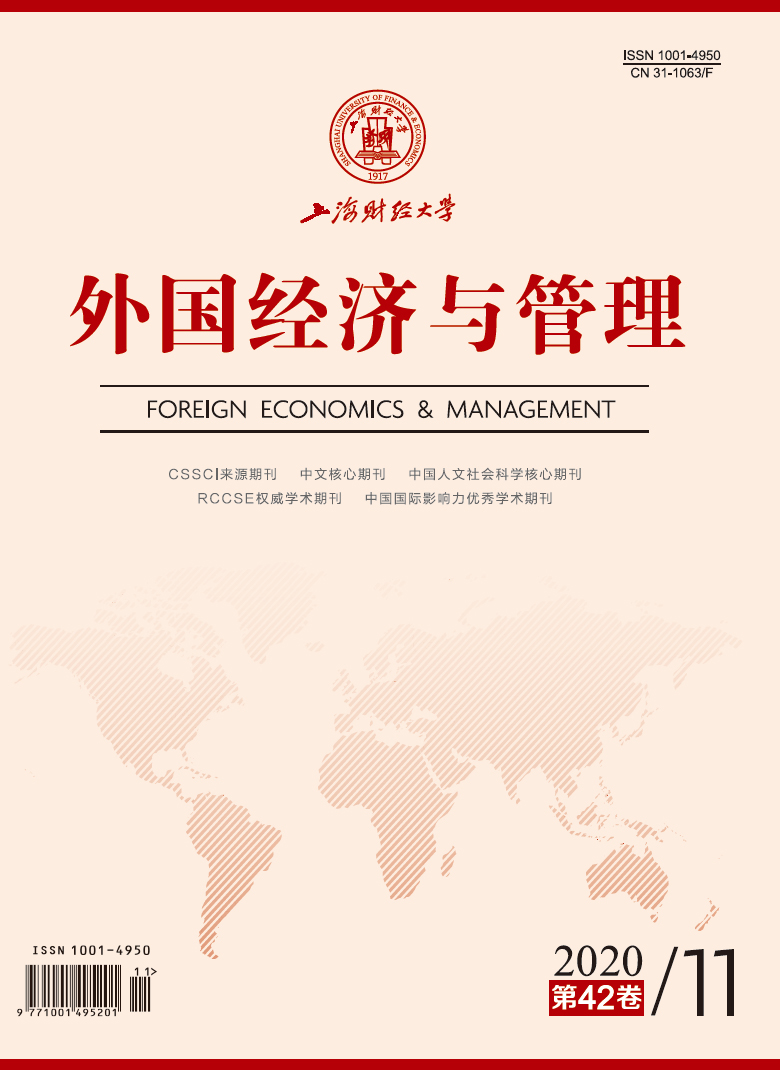随着大数据时代的到来,消费者的个人信息对于企业来说越来越重要,而消费者的隐私保护意识也日趋增强。对商家索取隐私信息的行为消费者有较强的抗拒心理,但同时消费者也有提供隐私信息以获得个性化服务的需求,这就使得消费者的隐私偏好和隐私披露意愿具有情境性,是动态变化的。鉴于此,本文考察了隐私授权时间与商家沟通方式所营造的不同情境对消费者隐私偏好的影响。文章通过实验发现,在“提前授权”(即在提供服务的一开始要求消费者进行隐私授权)情况下,消费者会感受到高度的不确定性,此时采用强调“拒绝授权的损失”的信息框架能够提高消费者的隐私披露意愿;而在“及时授权”(即在提供服务过程中需要获取隐私信息时要求消费者进行授权)情况下,消费者会感受到高强迫性,此时采用强调“授权的收益”的信息框架能够提高隐私披露意愿。本文的研究对于企业更深入地了解消费者的隐私偏好和心理需求,从而采取一定的策略缓解隐私矛盾、合理规范信息收集方式具有一定的启示意义。
授权时间和信息框架的匹配效应对隐私披露意愿的影响
摘要
参考文献
1 李贺, 余璐, 许一明, 等. 解释水平理论视角下的社交网络隐私悖论研究[J]. 情报学报,2018, (1): 1-13. DOI:10.3772/j.issn.1000-0135.2018.01.001
7 Acquisti A, Brandimarte L, Loewenstein G. Privacy and human behavior in the age of information[J]. Science,2015, 347(6221): 509-514. DOI:10.1126/science.aaa1465
8 Alkire L, Pohlmann J, Barnett W. Triggers and motivators of privacy protection behavior on Facebook[J]. Journal of Services Marketing,2019, 33(1): 57-72. DOI:10.1108/JSM-10-2018-0287
10 Coleman N V, Williams P, Morales A C, et al. Attention, attitudes, and action: When and why incidental fear increases consumer choice[J]. Journal of Consumer Research,2017, 44(2): 283-312. DOI:10.1093/jcr/ucx036
11 Dillard J P, Shen L J. On the nature of reactance and its role in persuasive health communication[J]. Communication Monographs,2005, 72(2): 144-168. DOI:10.1080/03637750500111815
12 Feng Y L, Chen L, Zheng A, et al. AC-Net: Assessing the consistency of description and permission in android apps[J]. IEEE Access,2019, 7: 57829-57842. DOI:10.1109/ACCESS.2019.2912210
13 Fiske S T. Attention and weight in person perception: The impact of negative and extreme behavior[J]. Journal of Personality and Social Psychology,1980, 38(6): 889-906. DOI:10.1037/0022-3514.38.6.889
14 Fransen M L, Verlegh P W J, Kirmani A, et al. A typology of consumer strategies for resisting advertising, and a review of mechanisms for countering them[J]. International Journal of Advertising,2015, 34(1): 6-16. DOI:10.1080/02650487.2014.995284
15 Gerlach J P, Eling N, Wessels N, et al. Flamingos on a slackline: Companies’ challenges of balancing the competing demands of handling customer information and privacy[J]. Information Systems Journal,2019, 29(2): 548-575. DOI:10.1111/isj.12222
16 Ghazali A S, Ham J, Barakova E, et al. The influence of social cues in persuasive social robots on psychological reactance and compliance[J]. Computers in Human Behavior,2018, 87: 58-65. DOI:10.1016/j.chb.2018.05.016
17 Gu J, Xu Y J, Xu H, et al. Privacy concerns for mobile app download: An elaboration likelihood model perspective[J]. Decision Support Systems,2017, 94: 19-28. DOI:10.1016/j.dss.2016.10.002
18 Ha L, McCann K. An integrated model of advertising clutter in offline and online media[J]. International Journal of Advertising,2008, 27(4): 569-592. DOI:10.2501/S0265048708080153
19 Johnson G A, Shriver S K, Du S Y. Consumer privacy choice in online advertising: Who opts out and at what cost to industry?[J]. Marketing Science,2020, 39(1): 33-51. DOI:10.1287/mksc.2019.1198
20 Joinson A N, Paine C, Buchanan T, et al. Measuring self-disclosure online: Blurring and non-response to sensitive items in web-based surveys[J]. Computers in Human Behavior,2008, 24(5): 2158-2171. DOI:10.1016/j.chb.2007.10.005
22 Krafft M, Arden C M, Verhoef P C. Permission marketing and privacy concerns—Why do customers(not)grant permissions?[J]. Journal of Interactive Marketing,2017, 39: 39-54. DOI:10.1016/j.intmar.2017.03.001
23 Kumar V, Zhang X, Luo A. Modeling customer opt-in and opt-out in a permission-based marketing context[J]. Journal of Marketing Research,2014, 51(4): 403-419. DOI:10.1509/jmr.13.0169
24 Lee H, Cameron G T. Utilizing audiovisual and gain-framed messages to attenuate psychological reactance toward weight management health messages[J]. Health Communication,2017, 32(1): 72-81. DOI:10.1080/10410236.2015.1099506
25 Li H R, Edwards S M, Lee J H. Measuring the intrusiveness of advertisements: Scale development and validation[J]. Journal of Advertising,2002, 31(2): 37-47. DOI:10.1080/00913367.2002.10673665
26 Martin K D, Borah A, Palmatier R W. Data privacy: Effects on customer and firm performance[J]. Journal of Marketing,2017, 81(1): 36-58. DOI:10.1509/jm.15.0497
27 Martin K D, Murphy P E. The role of data privacy in marketing[J]. Journal of the Academy of Marketing Science,2017, 45(2): 135-155. DOI:10.1007/s11747-016-0495-4
28 Meyers-Levy J, Maheswaran D. Exploring message framing outcomes when systematic, heuristic, or both types of processing occur[J]. Journal of Consumer Psychology,2004, 14(1-2): 159-167. DOI:10.1207/s15327663jcp1401&2_18
30 Moon S, Bergey P K, Bove L L, et al. Message framing and individual traits in adopting innovative, sustainable products(ISPs): Evidence from biofuel adoption[J]. Journal of Business Research,2016, 69(9): 3553-3560. DOI:10.1016/j.jbusres.2016.01.029
31 Nenkov G Y. It’s all in the mindset: Effects of varying psychological distance in persuasive messages[J]. Marketing Letters,2012, 23(3): 615-628. DOI:10.1007/s11002-012-9166-5
32 Pavlou P A, Liang H G, Xue Y J. Understanding and mitigating uncertainty in online exchange relationships: A principal-agent perspective[J]. MIS Quarterly,2007, 31(1): 105-136. DOI:10.2307/25148783
33 Shen L J. Antecedents to psychological reactance: The impact of threat, message frame, and choice[J]. Health Communication,2015, 30(10): 975-985. DOI:10.1080/10410236.2014.910882
34 Torkzadeh G, Dhillon G. Measuring factors that influence the success of Internet commerce[J]. Information Systems Research,2002, 13(2): 187-204. DOI:10.1287/isre.13.2.187.87
35 Van De Velde L, Verbeke W, Popp M, et al. The importance of message framing for providing information about sustainability and environmental aspects of energy[J]. Energy Policy,2010, 38(10): 5541-5549. DOI:10.1016/j.enpol.2010.04.053
36 Wang T, Duong T D, Chen C C. Intention to disclose personal information via mobile applications: A privacy calculus perspective[J]. International Journal of Information Management,2016, 36(4): 531-542. DOI:10.1016/j.ijinfomgt.2016.03.003
38 Wedel M, Kannan P K. Marketing analytics for data-rich environments[J]. Journal of Marketing,2016, 80(6): 97-121. DOI:10.1509/jm.15.0413
39 White T B, Novak T P, Hoffman D L. No strings attached: When giving it away versus making them pay reduces consumer information disclosure[J]. Journal of Interactive Marketing,2014, 28(3): 184-195. DOI:10.1016/j.intmar.2014.02.002
40 Wirth J, Maier C, Laumer S, et al. Perceived information sensitivity and interdependent privacy protection: A quantitative study[J]. Electronic Markets,2019, 29(3): 359-378. DOI:10.1007/s12525-019-00335-0
41 Xu J. The impact of self-construal and message frame valence on reactance: A cross-cultural study in charity advertising[J]. International Journal of Advertising,2019, 38(3): 405-427. DOI:10.1080/02650487.2018.1536506
42 Youn S, Kim S. Understanding ad avoidance on Facebook: Antecedents and outcomes of psychological reactance[J]. Computers in Human Behavior,2019, 98: 232-244. DOI:10.1016/j.chb.2019.04.025
44 Zhou W, Piramuthu S. Information relevance model of customized privacy for IoT[J]. Journal of Business Ethics,2015, 131(1): 19-30. DOI:10.1007/s10551-014-2248-y
引用本文
潘定, 谢菡. 授权时间和信息框架的匹配效应对隐私披露意愿的影响[J]. 外国经济与管理, 2020, 42(11): 81-93.
导出参考文献,格式为:






 9903
9903  6895
6895

